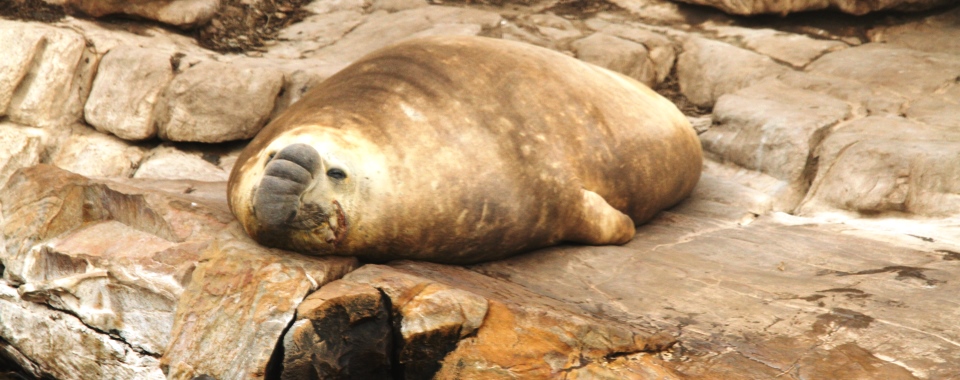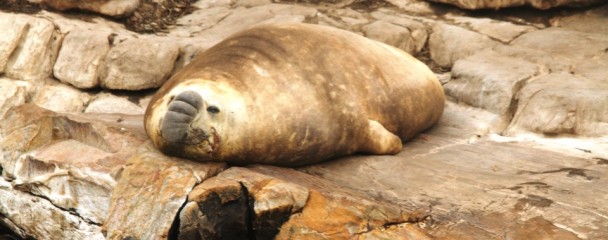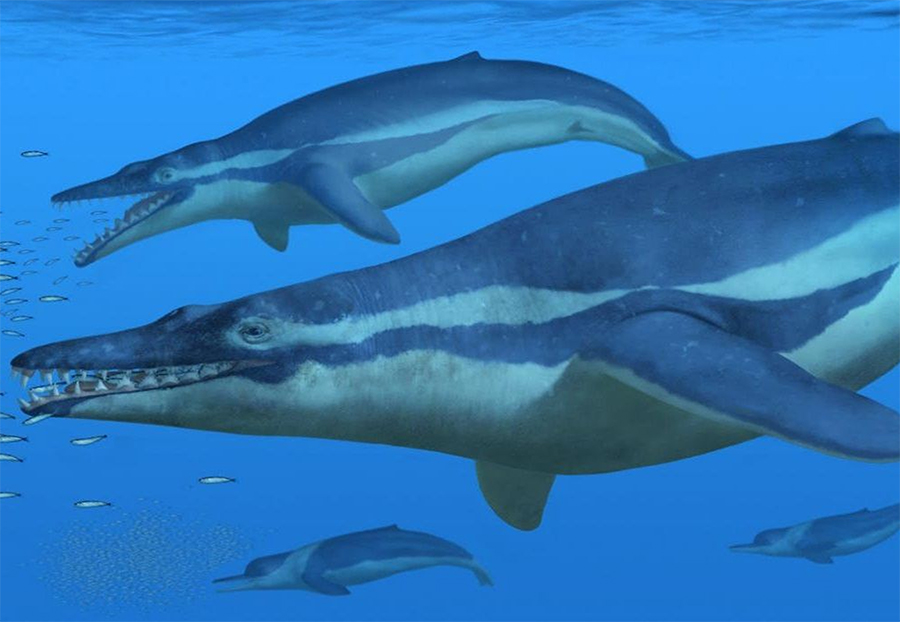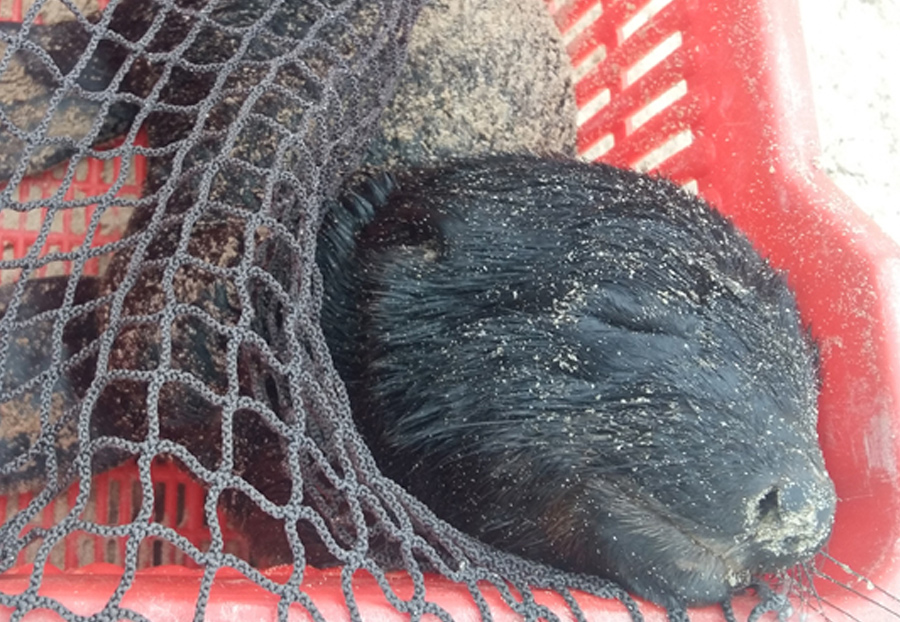Facts on Southern Elephant seals
There are a few different species of seals that can be found along the South African coastline. Most commonly seen is the Cape fur seal , but Sub Antarctic fur seals , Leopard seals and Southern Elephant seals are also spotted. There are two types of elephant seals, the Northern (Mirounga angustirostris) and Southern (Mirounga leonine). There is a single, vagrant Southern elephant seal that has been visiting Plettenberg Bay for several years.
The Southern elephant seal is the largest seal species in the world, with males that can weigh up to 3.7 tons and measure 6 m in length. They are up to 10 times bigger than the females (max 600kg in weight) and have an enlarged proboscis that looks like an elephant trunk (hence their name).
Southern elephant seals breed on islands and main land sites from the Antarctic continent to Patagonia with their main concentration on the sub-Antarctic islands. The two closest colonies to South Africa’s coast line are on Prince Edwards Island and the Tristan da Cunha group. Elephant seals generally haul out twice a year to molt, mate and give birth. They prefer to be on gradually sloped, sandy or pebble beaches, but have also been seen to use boulders or rocky shores.
Their breeding season starts when the bulls haul out in August and the females join them in mid-September. A single male can dominate harems of between 120-150 females and they will fight to the death with competing males who attempt to take over their harem. Females will spend about a month on land giving birth to a 1.3m and 40kg pup. They are mated shortly before returning to sea.
Elephant seals spend most of their life at sea and can dive between 300-500 m in depth for 20-30 minutes in search of food. One female was recorded diving to a depth of 1430m and another individual dived for 120 minutes.
The Southern elephant seal is classified as ‘least concern’ by the IUCN due to its wide spread occurrence and large population sizes. Historically they were hunted for thousands of years by aboriginals and native people in Australia and South America. They were also subjected to an intensive commercial harvest from the early 19th century to 1964. The target product of this harvest was the large amount of blubber that could be made into oil. Although they are no longer commercially hunted, they face other threats such as a reduction in prey availability due to over fishing and climate change. Their isolated habitats, away from human settlements, protect them to a large extent, from disturbance and habitat destruction.
Over the past 10- 15 years, a few elephant seals have been recorded in Plettenberg Bay. The most recent individual, (2011-present) a male, has been returning to the Robberg Peninsula on a yearly basis. It would appear that he arrives shortly after molting and remains in Plett for several months. In 2012 and 2014 he was observed killing and feeding on Cape fur seal pups, an extraordinary behavior that had never been documented for Southern elephant seals before.
References.
– http://www.iucnredlist.org/details/13583/0
– Whales dolphins and other marine mammals of the world (2006) by Hadoram Shirihai and Brett Jarrett. Prinston field guides 2006
– Le Boeuf B.J; Laws R.M Elephant seals: population ecology, behavior and physiology
– Penry GS, Baartman, A and Bester, MN (2013). Vagrant elephant seal predation on Cape fur seal pups, Plettenberg Bay, South Africa. Polar Biology, 36 (9), 1381-1383.
– Oosthizen W.H David J.H.M. Ross G.J.B. 1988 New records of Southern Elephant seals Mirounga leonine on the coast of Southern Africa S.Afr:J.Mar.Sci 7:75-86





